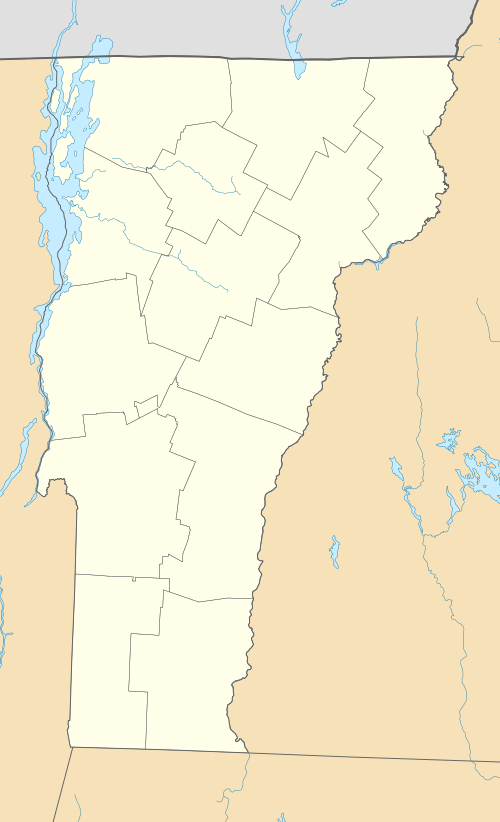St. Johnsbury Main Street Historic District
The St. Johnsbury Main Street Historic District encompasses the historic civic and cultural center of the town of St. Johnsbury, Vermont. Organized along the town's Main Street, it includes high-quality architecture spanning the 19th and early 20th centuries, and includes the National Historic Landmark St. Johnsbury Atheneum. Many of the district's buildings were designed by Lambert Packard, a prominent local architect. The district was listed on the National Register of Historic Places in 1975, and was enlarged slightly in 1976.[1] It was subsumed into the larger St. Johnsbury Historic District in 1980.[2]
St. Johnsbury Main Street Historic District | |
  | |
| Location | Area along Main St. including intersecting streets, St. Johnsbury, Vermont |
|---|---|
| Coordinates | 44°25′6″N 72°1′14″W |
| Area | 75 acres (30 ha) |
| Architectural style | Mid 19th Century Revival, Late Victorian |
| NRHP reference No. | 75000238[1] |
| Added to NRHP | May 28, 1975 |
Description and history
The town of St. Johnsbury was settled in the late 18th century, and was at first organized primarily on a high terrace above the Passumpsic River, where its Main Street is now located. This area developed as a residential and civic hub, with some commercial development, in the first half of the 19th century. The arrival of railroad lines in the 19th century prompted major development in the "lower district", now Railroad Street, as a commercial center organized around the railroads. The Main Street area retained its civic importance, and is where the town hall and the county facilities of Caledonia County are located.[3]
The historic district extends along Main Street, from Mt. Pleasant Street in the north to Vine Street in the south. It includes a small residential area bounded by Vine, Main, and Barker Streets and Western Avenue, and also on Prospect Street. The northern end of the district is anchored by a small triangular park, and is predominantly residential. South of Winter Street there are a cluster mainly religious buildings, including the Fairbanks Museum and Observatory. At the junctions with Western and Eastern Avenues (signed United States Route 2) there are a few commercial buildings, the town hall and county courthouse, and the St. Johnsbury Atheneum, built in 1875 and one of the nation's oldest unaltered museums. South of the Western Avenue junction, where there is also a small triangular park with a Victorian fountain, is a small residential area characterized by high-quality large-scale homes, including some built by members of the locally prominent Fairbanks family, owners of the Fairbanks Scale Works, the town's largest employer in the late 19th century.[2]
References
- "National Register Information System". National Register of Historic Places. National Park Service. July 9, 2010.
- Courtney Fisher (1980). "NRHP nomination for St. Johnsbury Historic District". National Park Service. Retrieved 2017-01-11. with photos from 1980
- Courtney Fisher (1975). "NRHP nomination for St. Johnsbury Main Street Historic District". National Park Service. Retrieved 2017-01-12. with photos from 1975